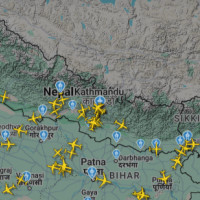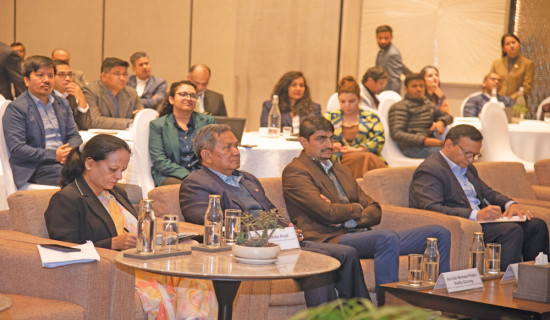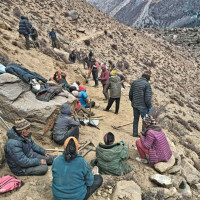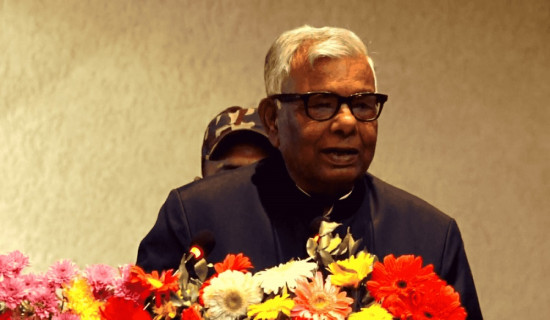- Thursday, 13 March 2025
Power sector in need of Rs. 800 billion investment in five years
By Laxman Kafle,Kathmandu, June 19: Nepal Electricity Authority (NEA) has made it clear that electricity has not been exported by cutting supply inside the country.
Organising a press conference on Sunday, Managing Director of NEA Kul Man Ghising made it clear that due to the technical problems in the transmission and distribution system, there were frequent power outages in some parts of the country, especially in central and western Nepal.
“It is true that there has been a disturbance in the system for a few days, it seems to be tripping up to 11 times a day,” he said.
He, however, said that such power tripping problem has now been resolved.
He said that it was not possible to export electricity when thee was fault in the system.
Due to a problem in the Authority’s system, it has not been able to provide regular electricity for a few days, he said, adding that the Authority’s system could not cope with the rapid increase in demand for electricity in the Tarai districts.
The NEA is being criticised on social media after the problem of intermittent power cuts for the last few days.
“We didn’t cut the lights here and export the electricity. Except during peak time, there is more supply, so it should be exported. If it is not exported, it will be wasted and we (the Authority) will have to incur losses,” he said.
He said that only the surplus electricity generated in Nepal would be exported.
Similarly, the first priority of the NEA is to increase domestic consumption, but it is equally important to export the surplus electricity, he noted.
“In most of the districts of Tarai, the demand for electricity is very high now, this is good for us, but if the demand is high, the 200 kilowatt capacity transformer is unable to meet it,” he said.
The power generation has increased and reached 2,000 MW at present and will gradually increase with the beginning of monsoon. The installed capacity of the hydropower projects is 2,700 MW.
“During the rainy season, around 2,500 to 2,600 megawatts of electricity will be produced. There will be a situation of exporting up to 1,000 megawatts of electricity during the time of low consumption in the domestic market, he said.
Currently, the NEA is exporting surplus electricity to India. There is only Dhalkebar-Muzaffarpur transmission to export power from Nepal.
However, NEA is also importing around 40-50 MW electricity through Tanakpur to supply electricity targeting Kohalpur area.
“We are compelled to import electricity in western part due to the absence of transmission lines to supply electricity from east to west,” he said.
Obstruction in construction of transmission lines
He said that there are obstacles from everywhere for the implementation of the plans and programmes put forward to improve the transmission and distribution system.
Stating that the disturbance in the construction of the ongoing transmission lines is a challenge for regular and quality electricity supply, he asked the concerned bodies to support the completion of transmission and distribution lines in time.
He accused other agencies of not helping in the construction of the transmission lines.
He said that if all the agencies of the state do not give priority to the construction of transmission and distribution lines, there will be problems in electricity supply in coming years.
“Transmission and distribution lines must be improved to export electricity, to increase domestic consumption or to get economic benefits from electricity. If it cannot be improved, billions of investments will be at risk,” he said.
He said that due to problems such as land acquisition and tree cutting, the transmission lines could not be constructed, and there was a problem in electricity distribution.
Huge investment needs
Ghising said that investment in electricity is now necessary for making electricity supply reliable and qualitative.
He said that it would be a big disaster if the electricity produced in the country could not be consumed here and the investment in the transmission and distribution infrastructure for the export of the surplus energy was not increased.
“It is said that load-shedding has ended, there is no need to invest in the energy sector, but to increase consumption and export electricity, an investment of nearly Rs. 800 billion is required in the next five years,” he added.
The Authority has invested more than Rs. 100 billion from the profits earned in the past years, he said, adding that if this investment was not made, there would be a situation where load shedding could recur.
Likewise, investment is also necessary to meet the government and Authority’s goal of making electricity supply from the national grid accessible to all citizens within two years.
According to him, the time has come to increase investment in infrastructure to provide reliable and quality electricity to consumers.



-original-thumb.jpg)

-square-thumb.jpg)











